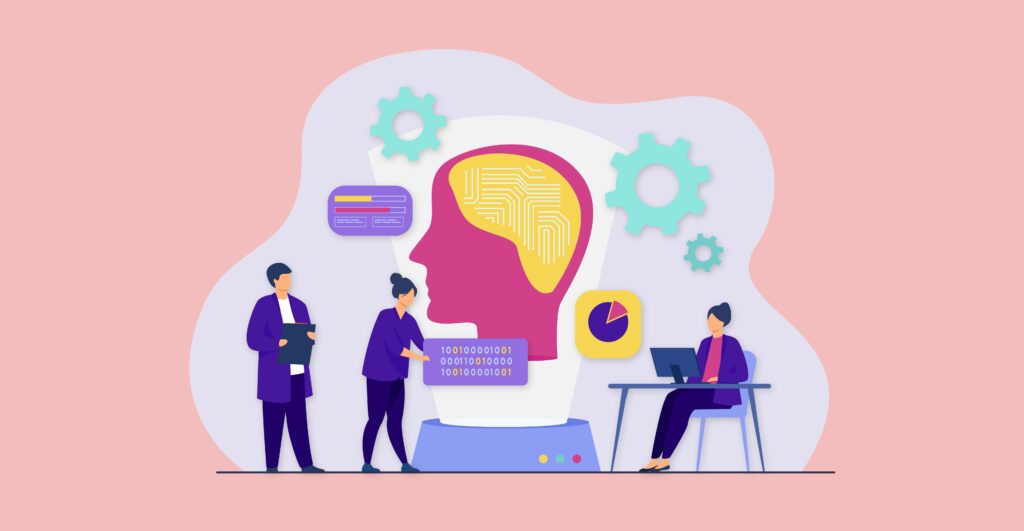e-Learning Trends for 2022

The use of online learning has exploded in recent years, not just among educational institutions, but across all major industries. Improvements in technology and the rapid growth of the internet have been driving the industry’s massive expansion.
However, no other factor has had the greatest impact on e-Learning than COVID-19, which forced most districts into lockdowns and left students in a remote learning environment.
As the pandemic affected even the education sector, e-Learning was deployed to ensure continuity of learning and upskilling. It has increased the demand for online learning options and provided several industries with the opportunity to rethink their learning styles and methods.
If you’re from one of the businesses that are starting to incorporate e-Learning components into their training strategies, here are some trends you need to watch out for this year.

1. Artificial Intelligence
Artificial Intelligence (AI) is one of the e-Learning trends that are being discussed across industries. The role of AI is becoming increasingly important as it offers instructors the following advantages:
- Personalisation: By analysing each learner’s performance, AI can provide instructors with useful information about their students’ learning styles, abilities, and progress, as well as suggestions for how to tailor their teaching methods to meet the needs of each student.
- Task Automation: Basic and repetitive tasks, such as administrative work, grading exams, and responding to general inquiries, can be automated using AI. With AI, educators can automate manual processes, leaving more time to focus on what they do best: teaching and facilitating learning.

2. Immersive Technologies
Immersive technologies refer to a type of technology that replaces or enhances the physical environment by creating virtual spaces that users can interact with. It can take several forms, ranging from virtual reality (VR), which blocks users from real-world environments while immersing them with digital information, to augmented reality (AR), which overlays a layer of digital content on top of the physical world. Like artificial intelligence, it has shown significant potential in the e-Learning landscape.
With immersive technologies, students can learn through ‘doing’ and interacting in a way that mimics real-life situations, in recreated, remote environments. As a result, it can help transform learners who are passive participants into active explorers!
Whether you’re creating new training or improving on existing programmes, immersive technologies contribute to closing the gap between theory and practise, enhancing learning and student engagement.

3. Game-based Learning
Gamification in e-Learning is another trend to keep an eye on this year. It involves the use of game elements and mechanics to make learning activities more compelling and engaging. It has already proven to be a reliable solution for student retention, and continues to grow in popularity due to a number of advantages.
Gamification works because it taps into the learner’s natural desire for competition and victory. The incorporation of game elements, such as badges, rewards, and leaderboards, motivates a learner to win the game, keeping them engaged and focused. Also, gamifying your e-Learning courses gives your learners a chance to share their abilities with others, helping them gain new relationships and be more sociable. And as a result, learning becomes more fun!
The gamification industry will continue to expand, with a report from PRWeb predicting that the market will jump to $29 billion by 2025. So, why not put it to good use for your learning strategies?

4. Microlearning
Time is one resource that most employees have in short supply. Lack of time makes it difficult to acquire the skills and training needed to increase productivity, improve performance, and prepare for the future. Therefore, microlearning can be part of the solution to this problem, as it breaks down knowledge into small, bite-sized pieces that can be done in a short amount of time. As opposed to hour-long courses and seminars, it consists of short lessons that quickly teach us something concrete without disrupting our workflow or overwhelming us with information.
Microlearning has been shown to increase completion rates by 83%, and increase knowledge retention while cutting development costs in half. With the recent emergence of new work strategies, leveraging your company with microlearning can create an environment in which employees are able to learn at their own pace and preference, and provide learning experiences that can work for all types of modern learners.

5. Big Data Analytics
The needs of learners are always changing and the demand for more personalised learning is growing. To provide a more tailored learning environment, big data analytics is essential.
Big data analytics includes all data generated when a learner interacts with the training module of an e-Learning platform. By collecting and evaluating learners’ data, it allows you to truly understand the entire learning process, enabling you to create more personalised courses and strategies to bring satisfaction to your students.
This 2022, big data will continue to add value to your training methods, giving you the insights necessary to make better decisions and to adapt to the unique needs of your learners.
New technologies and digital experiences are constantly evolving, impacting the way businesses operate, train, and work. And as e-Learning continues to accelerate in educational institutions and in other industries, your company must embrace these trends and consider how things, such as augmented reality (AR), artificial intelligence (AI), and microlearning might improve your learning and training initiatives.
Regardless of which trend you choose to implement, the advantages of following these trends are undeniable!
Providing your learners with fun and unique educational experiences can increase student retention, and can also put your training ahead of the competition.
Are you keen to stay ahead of the trends and offer your learners the best online learning tools available? At SSA Innovations, we help you develop interactive and engaging e-Learning solutions that are tailored to your learning and training needs. Through captivating storylines, role-based scenarios, and AR games, we can help you transform outdated courses into engaging experiences! We have learning management systems (LMS), too, to help you manage and deploy your training programmes and learning processes. To learn more about our products and services, contact us today!
Related Topics

Yes or No: Does your business need a Learning Management System (LMS)?
Test out this interactive flowchart to decide whether you need...

Learning Management System: What’s the Role of Artificial Intelligence?
In an era where the use of artificial intelligence is...

Incorporating Universal Design for Learning Principles to Online Education
Examine how to integrate Universal Design for Learning into your...

Universal Design for Learning: A Beginner’s Guide
Learn about the Universal Design for Learning and its three...

The Concept of Green Digital Learning Campus
As the globe prioritises eco-friendly practises to save our planet,...